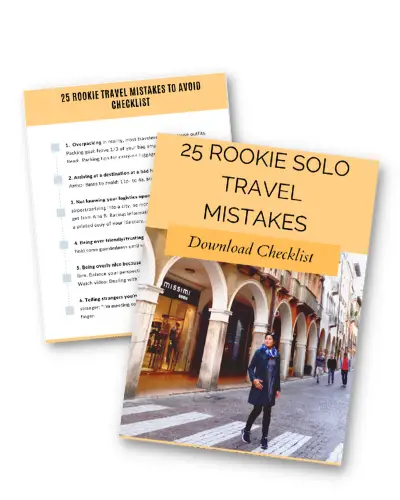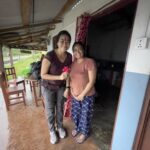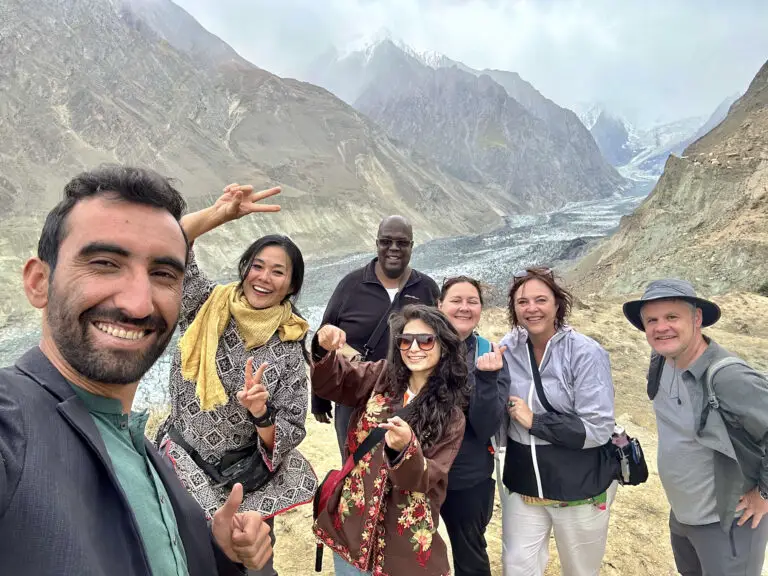Last Updated on January 17, 2018 by Christine Kaaloa
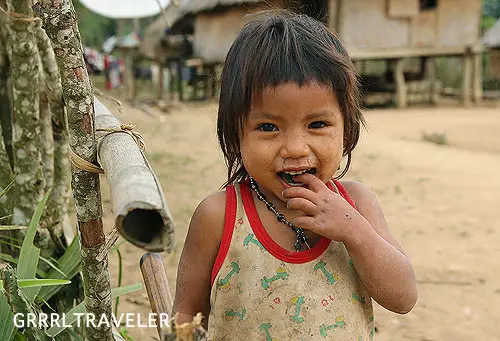
These days I enjoy trekking where it’s possible. Aside from a great workout, I like visiting mountain life, its lush and pristine settings of streams, hills and rice paddy fields and simple, hardworking and content inhabitants. So I wanted to go trekking in Northern Laos.
I arrived in Muong Ngoi. Closer to trekking routes and offering lower tour prices, I decided to take a trek from my guide at my guesthouse. Mary was a Dutch woman in her 50’s, who had traveled for over two years now, solo. We had met on the boat and decided to share a room in Muong Ngoi. Now we hoping to take a day trek.
“It’s an easy walking trek.“
Aoot (pronounced Ah-oot), our guide pitched as he sized up Mary, two senior U.K. ladies and myself. Easy walking? My enthusiasm dropped notches. No gasping for air with breathless intensity? This didn’t seem like the treks I’d been used to.
Table of Contents: Finding Laotian Beauty by Trekking in Northern Laos
Trekking in Northern Laos
We took a half-hour boat ride up the river to a Lao village, the starting point of our trek. The village was predominantly Lao with some resident hill tribe Khmu folk, sharing its stretch. Aoot pointed out an interesting distinction between the two houses: both, are stilted and raised above ground, with the exception, Lao houses are laid out in a neat and orderly manner.
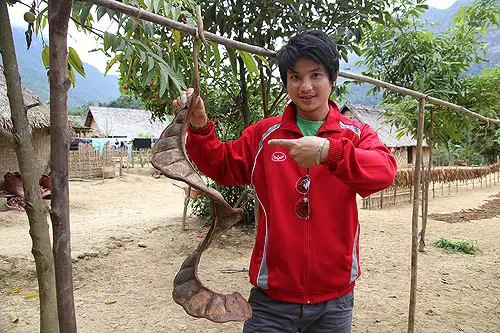
Our guide, Aoot.
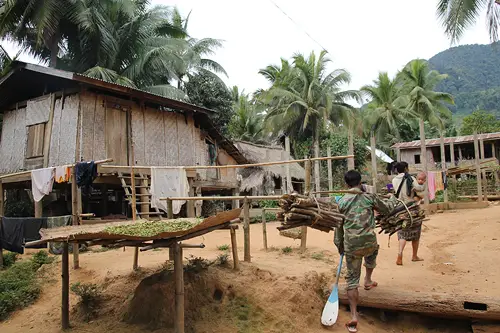
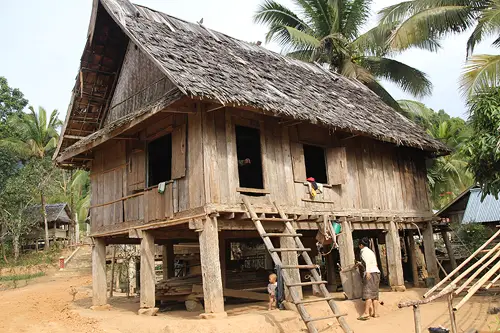
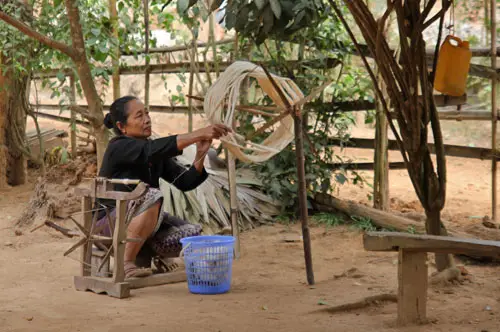
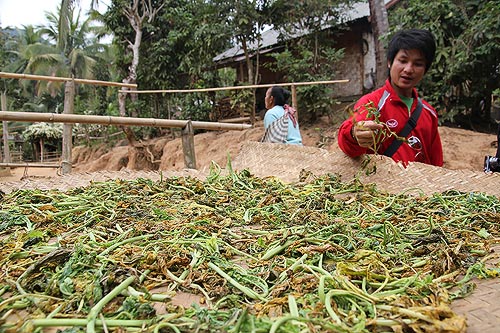 We walked along a worn dirt road. Easy walking. Every now and then, we’d climb over fences or have to cross streams via wooden logs.
We walked along a worn dirt road. Easy walking. Every now and then, we’d climb over fences or have to cross streams via wooden logs.
For each question we asked, Aoot happily tried to provide an answer, trying to give us insight into the Lao culture and its people. Sometimes, the language barrier challenged our understanding. Aoot spoke about the rural Lao lifestyle and how most Laotians don’t earn money but live off of the land. He spoke about how he had spent most of his life wanting to become a policeman and live in Luang Prabang. This was until he discovered the joys and freedom of being a guide. He was now content with his job as a guide, living in Muong Ngoi and his happiness showed.
Along the way, we saw children busy gathering rocks from a stream and placing them in bags strapped around their heads. Dressed in worn (and some, tattered) clothes, it was clear that the rocks were for some construction project, back home.The children were curious and happy to see foreign travelers yet focused on their chores. They had to get home.
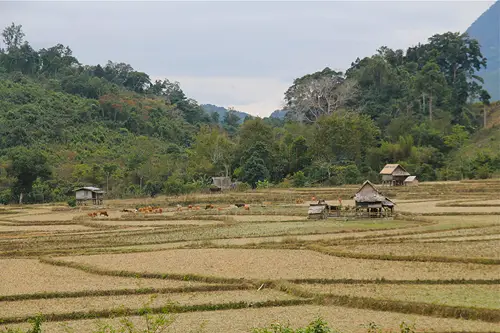
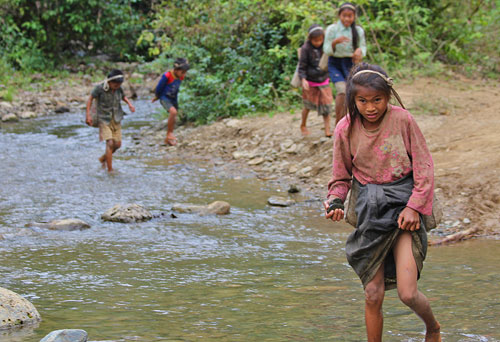
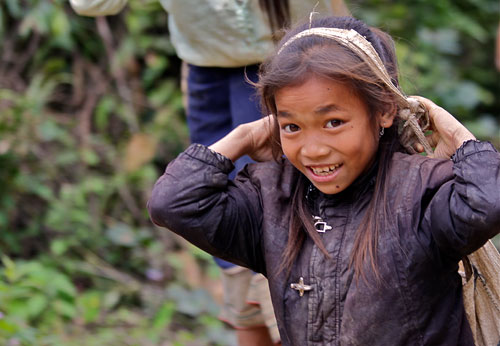
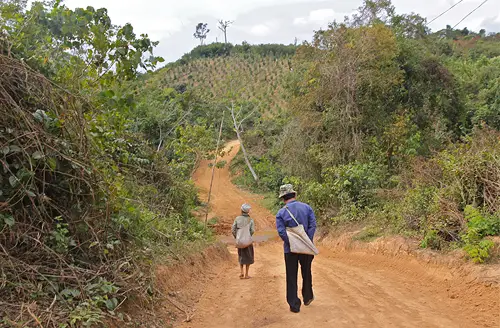
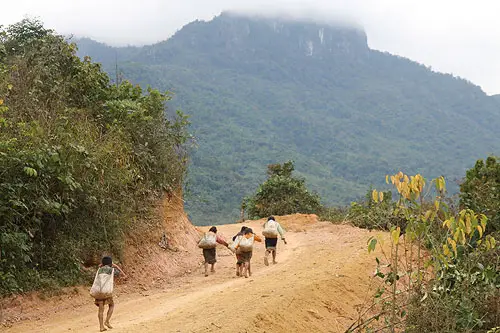
Close to 45 minutes of tailing the children (and the little boy who picked up the rear, with a hole in his shorts), we arrived at the entrance for their two villages: a Hmong and a Khmu.
Meeting the village chief and customs of a Hmong Village
It’s said the Hmong village tribe love children. The average number of kids for a Hmong family?
Hold on. It’s 8-10 children per family! That’s a “tribe”.
Entering the village, the chief’s house is always the first stop. A foreigner’s visit is always announced out of tradition. We were welcomed to eat lunch at the house of the Hmong chief. I’d never eaten at a village chief’s house before, much less met a village chief, so it was a privilege. A chief dressed in a N.Y.C. sweatshirt wasn’t what I imagined, but in this day and age, it hardly surprised me.
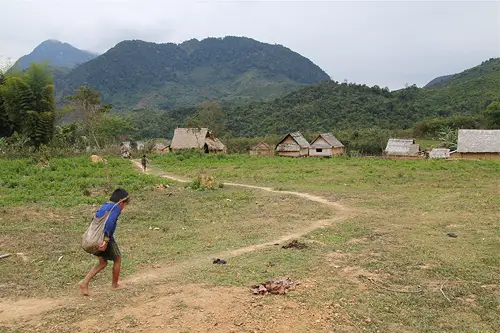
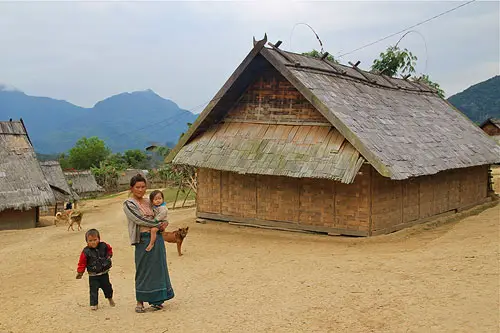 A Hmong Village
A Hmong Village
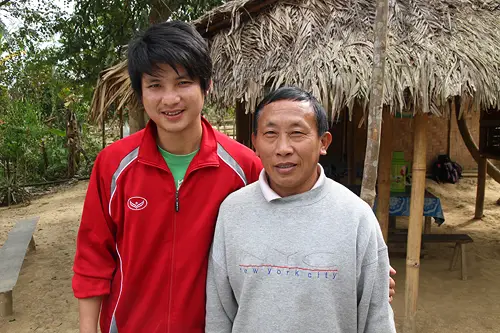 Aoot and the Hmong village chief
Aoot and the Hmong village chief
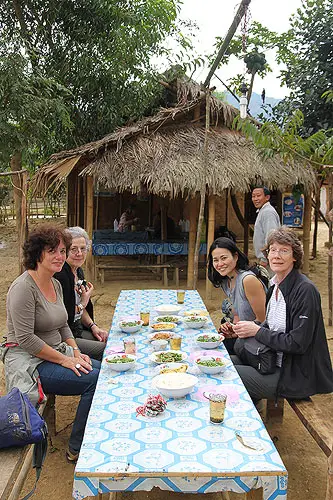 It was a large spread of food
It was a large spread of food
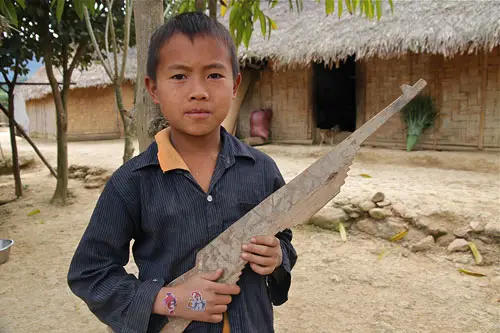
The Hmong village chief’s son
We explored the villages to get an idea of how mountain folk live and go about their daily life in such remote surroundings. For instance, there’s a community house,with a television set and satellite dish. It’s their movie house. Building a house is something the community participates and helps out with, as well. We saw how villagers ground corn, husked rice and laid various foods out for dry.
And true, village life revolves around having many children. To see youth armed only with their imagination and crafted toys from nature (vs clutching video games, cellphones and mp3 players) is a refreshing break.
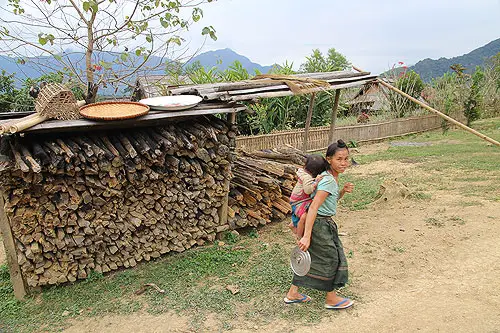
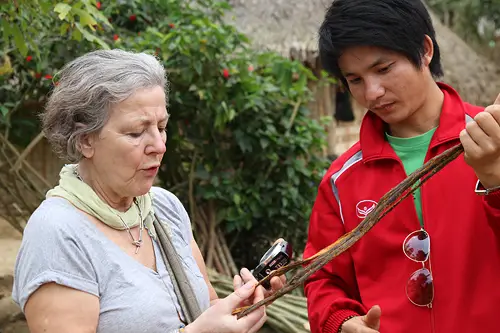
The Khmu village
Houses were neatly arranged but the khmu lifestyle felt a lot simpler. We didn’t need to make any announcement and we just walked through. Many children were out playing; all beautiful and tempting playful curiosity with us, foreigners. Many of the Khmu men were busy helping a family construct their house and just went about their business.
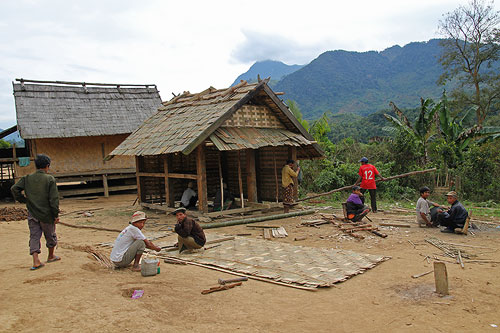 Khmu villagers helping a family build a house
Khmu villagers helping a family build a house
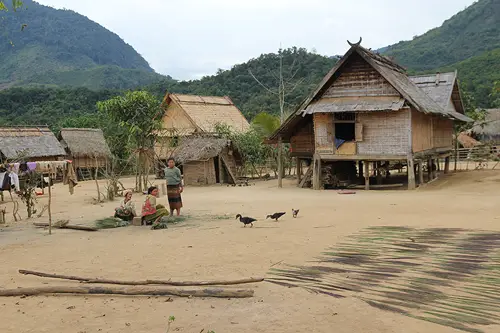 A Khmu Village
A Khmu Village
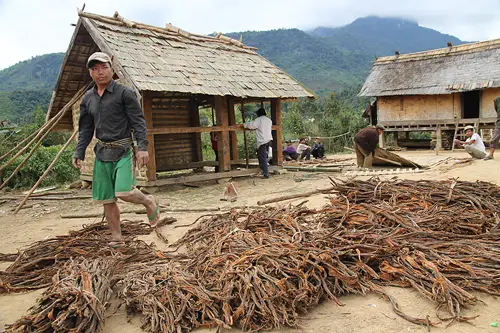
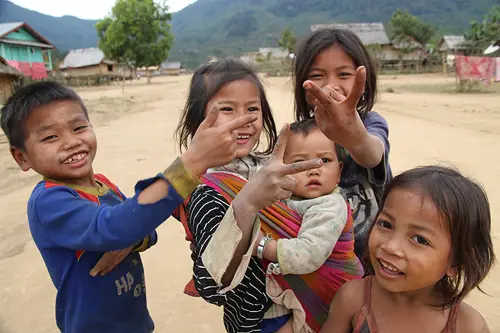
What traveler taught them that? Were they flipping me the bird?
Come late afternoon, it was time to head back to our boat. Aoot decided to take us through a slightly more rugged route through fields and a bit of shrub and forestry. The day however, was all easy walking, just as Aoot promised.
Easy walking but no less the rigors of feeling enriched by what I learned of a unique culture and its village life. It was a perfect trek to enjoy the laid-back and culturally-rich lifestyle of a Lao day!


